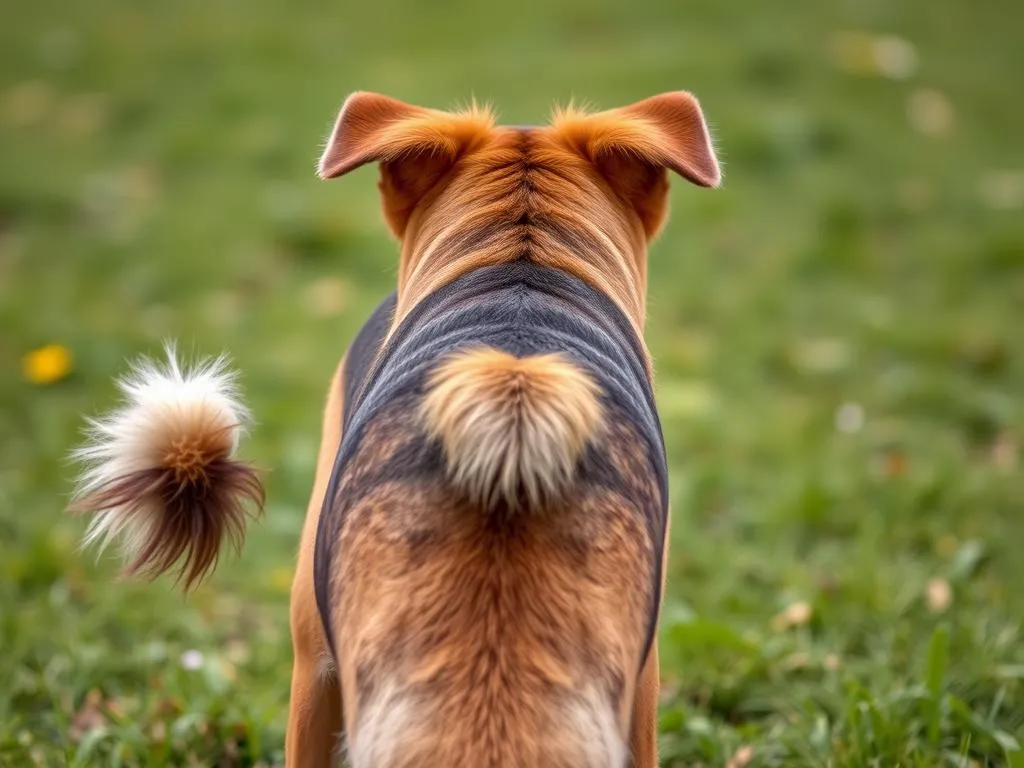
Introduction
The anatomy of animals serves a crucial role in their survival, communication, and interaction with the environment. Among all pets, dogs particularly capture our hearts with their expressive features and behaviors. One of the most fascinating aspects of a dog’s anatomy is its tail. Why do dogs have tails? This question goes beyond mere curiosity; understanding the functions of a dog’s tail can deepen our appreciation for these loyal companions. In this article, we will explore the anatomical structure of dog tails, their evolutionary background, various functions, common misconceptions, and tips for tail care.
The Anatomy of a Dog’s Tail
Structure of the Tail
A dog’s tail is a complex structure composed of bones, muscles, and nerves. The tail is primarily made up of vertebrae, which are variously sized and shaped depending on the breed. These vertebrae are encased in muscles that allow for a broad range of movement. The nerves running through the tail contribute to its sensitivity, enabling dogs to feel sensations, whether it’s a gentle breeze or a playful nudge.
Different breeds exhibit unique tail structures. For instance, a Greyhound has a long, slender tail, while a Bulldog possesses a shorter, thicker tail. This variation not only affects their appearance but also their functionality.
Types of Tails
Dog tails come in various shapes and forms. Here are some common types:
- Straight Tails: Common in breeds like the Labrador Retriever, these tails point straight out from the body.
- Curled Tails: Breeds like the Shiba Inu have tails that curl over their backs, giving them a distinctive look.
- Docked Tails: Some breeds, such as the Boxer, have tails that are docked (shortened) for specific purposes or breed standards.
Understanding these types can help clarify how different tails serve various functions.
Evolutionary Perspective
Historical Significance
The evolution of canines can be traced back to their wild ancestors, where tails played a pivotal role in survival. Early dogs used their tails for balance and communication, much like their wild cousins, wolves. The tail has been an essential tool for dogs, aiding in social interactions and signaling danger.
Natural Selection and Adaptation
Through natural selection, dogs have adapted their tails to meet both environmental demands and their social structures. For instance, tails are integral for communication within packs. They help express emotions, which is vital for social bonding and cohesion among dogs. The evolutionary perspective showcases how tails have developed over time to cater to the needs of both individual dogs and their species as a whole.
Functions of a Dog’s Tail
Communication
One of the most significant functions of a dog’s tail is communication. The position and movement of a dog’s tail can convey a range of emotions:
- Wagging Tail: Often indicates happiness or excitement, especially when accompanied by a relaxed body posture.
- Low Tail Position: Can signify fear or submission.
- Stiff, High Tail: May indicate aggression or alertness.
Dogs also use their tails to signal intentions during interactions with other dogs and humans. For example, a friendly dog may approach with a wagging tail, while a nervous dog may tuck its tail between its legs.
Balance and Coordination
Tails also play a critical role in maintaining balance and coordination. Dogs use their tails for stabilization, especially while running or jumping. Much like cats, dogs can adjust their tails to prevent falls or maintain their footing on uneven surfaces. Breeds that were originally bred for agility, such as the Border Collie, display remarkable tail coordination during high-energy activities.
Protection and Defense
In addition to communication and balance, tails can also serve as a protective mechanism. For instance, dogs may swat their tails to fend off insects or other nuisances. This function is particularly important for outdoor dogs who encounter various pests.
Social Interaction
Tails are vital for social interaction among dogs. In pack dynamics, tail signals can indicate hierarchy and establish social bonds. A dominant dog may hold its tail high, while a subordinate dog may exhibit a lower tail position. Observing how dogs interact through their tail movements can offer insights into their social behaviors and relationships.
Common Misconceptions About Dog Tails
Myths and Misunderstandings
There are several misconceptions surrounding dog tails. Here are a few common myths:
- Wagging Always Means Happiness: While a wagging tail often indicates excitement, it can also signal agitation or aggression, depending on the context.
- Longer Tails Are Always Better: Some breeds are naturally docked, and their tails are perfectly adapted for their needs. Tail length does not determine a dog’s happiness or health.
Cultural Perceptions
Cultural interpretations of dog tail behavior can vary significantly. In some cultures, a wagging tail is seen as a sign of friendliness, while in others, it might be viewed with suspicion. Understanding these cultural nuances can enrich our interactions with dogs and enhance our communication strategies.
Tail Care and Health
Importance of Tail Health
Just like any other part of a dog’s body, the tail requires proper care and attention. Common tail injuries can occur, such as breaks or infections. Dogs that engage in rough play or outdoor activities may be more susceptible to tail injuries. Regularly inspecting your dog’s tail for signs of injury or discomfort is crucial for maintaining its health.
Grooming and Maintenance
Grooming is essential, especially for long-haired breeds. Here are some tips for maintaining your dog’s tail:
- Regular Brushing: Keeps the tail free of tangles and mats.
- Bathing: Regular baths help remove dirt and debris that can accumulate on the tail.
- Checking for Parasites: Ensure that your dog’s tail is free from fleas and ticks, which can cause irritation and health problems.
By prioritizing tail care, you can help ensure your dog’s overall well-being.
Conclusion
Understanding why dogs have tails encompasses a fascinating blend of anatomy, evolution, communication, and care. From their role in conveying emotions to aiding in balance and social interactions, tails are integral to a dog’s life. By observing our dogs’ tails and their movements, we can gain deeper insights into their feelings and needs. Being aware of the significance of tails also enhances our ability to care for our furry friends, ensuring they lead happy and healthy lives.
In the grand tapestry of canine anatomy, the tail is not merely an appendage but a vital tool that enriches the bond between humans and dogs. As we continue to explore and understand our canine companions, we can appreciate the myriad ways in which they express themselves, with their tails telling stories of joy, fear, and companionship.









